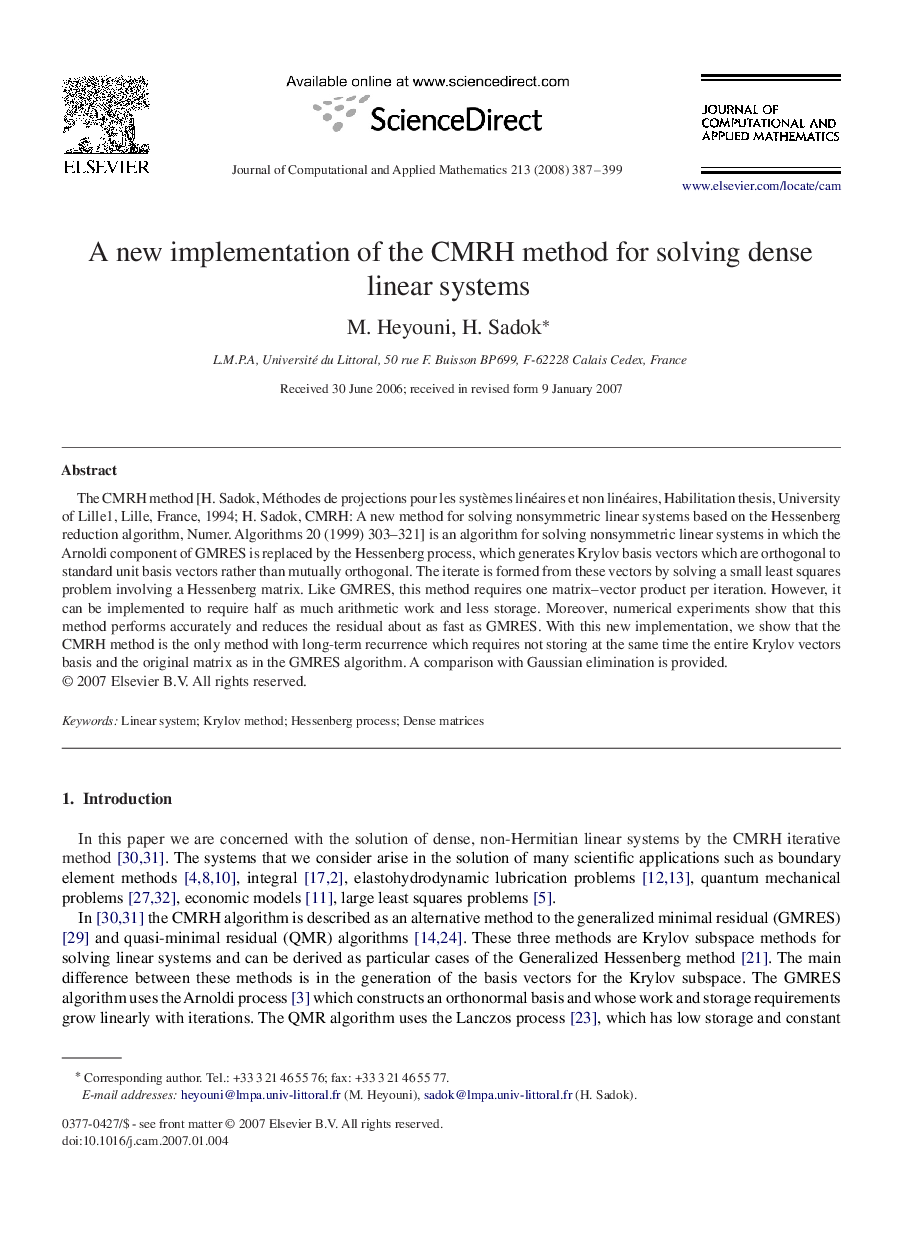| Article ID | Journal | Published Year | Pages | File Type |
|---|---|---|---|---|
| 4642389 | Journal of Computational and Applied Mathematics | 2008 | 13 Pages |
The CMRH method [H. Sadok, Méthodes de projections pour les systèmes linéaires et non linéaires, Habilitation thesis, University of Lille1, Lille, France, 1994; H. Sadok, CMRH: A new method for solving nonsymmetric linear systems based on the Hessenberg reduction algorithm, Numer. Algorithms 20 (1999) 303–321] is an algorithm for solving nonsymmetric linear systems in which the Arnoldi component of GMRES is replaced by the Hessenberg process, which generates Krylov basis vectors which are orthogonal to standard unit basis vectors rather than mutually orthogonal. The iterate is formed from these vectors by solving a small least squares problem involving a Hessenberg matrix. Like GMRES, this method requires one matrix–vector product per iteration. However, it can be implemented to require half as much arithmetic work and less storage. Moreover, numerical experiments show that this method performs accurately and reduces the residual about as fast as GMRES. With this new implementation, we show that the CMRH method is the only method with long-term recurrence which requires not storing at the same time the entire Krylov vectors basis and the original matrix as in the GMRES algorithm. A comparison with Gaussian elimination is provided.
